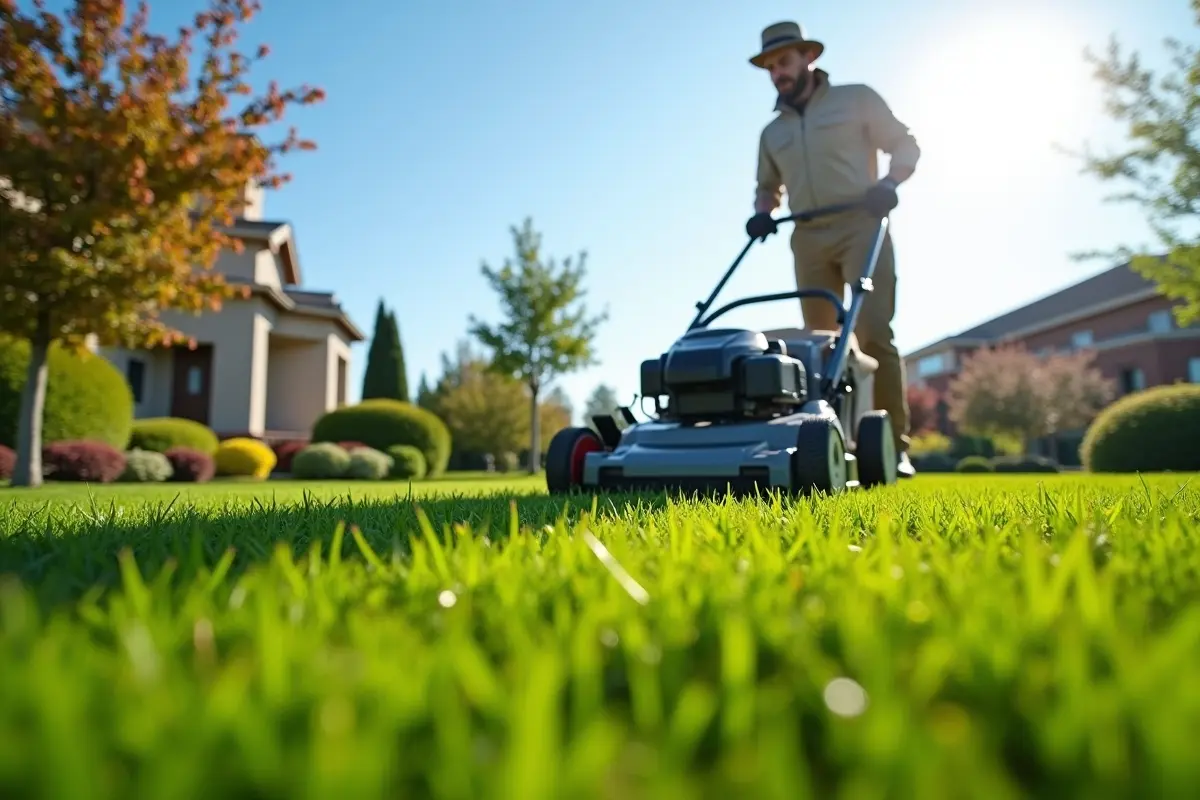Maintaining a lush, healthy lawn takes effort and a clear understanding of how your property’s needs change from season to season. The secret to thriving grass is consistency—combining regular maintenance with timely adjustments as the weather shifts. Recognizing that grass behaves differently when it’s cold, hot, wet, or dry is crucial. Successful lawn care isn’t just about making your property look beautiful but also promoting environmental resilience, contributing to water retention, and even providing habitat for beneficial insects and microorganisms.
Homeowners in all regions, including those seeking Norwalk, CT lawn care, should focus on seasonal lawn care routines to help their turf withstand heat, cold, pests, and wear. A stunning lawn is an ongoing project, shaped by informed actions throughout the year.
Early planning and the right approach for each part of the year can minimize weed invasions, conserve water, and reduce chemical needs. An effective lawn care routine involves observation and adaptation, anticipating the unique needs of your climate and soil as well as shifts in sunlight or rainfall.
A year-round lawn care strategy prioritizes prevention, adapts to local climate conditions, and emphasizes soil health for sustainable, attractive results that require less intervention over time. The investment you make in understanding foundational practices pays off in the long run through healthier, thicker turf and fewer surprises.
Spring: Awakening Your Lawn
As winter recedes and temperatures rise, focus on shaking off the effects of dormancy that your lawn has endured. Start with a vigorous raking to remove leaves, twigs, and any leftover thatch, as well as lingering debris from winter storms or animal activity. Clearing this debris allows sunlight and air to reach the soil, promoting rapid recovery and reducing the risk of mold, mildew, or disease. It’s also a chance to spot signs of snow mold or frost damage so you can react early.
Next, aerate compacted areas; springtime rain and foot traffic often compress the soil, which inhibits drainage and root growth. Aeration boosts oxygen flow to the roots and enhances water uptake, which is essential after a long, cold season.
Early spring is also the ideal time to apply a balanced, slow-release fertilizer, providing roots with essential nutrients for robust growth as grass wakes up and is ready to grow. Overseeding can work wonders in the spring, filling in bare patches left behind by winter’s challenges and thickening the turf to improve resistance to future weed invasion.
Select a seed blend tailored to your region and lawn type for optimal results. Take advantage of the mild spring weather and sow seeds after aeration, but before applying pre-emergent weed control, to ensure seeds make good contact with the soil and have a chance to establish. Spring preparation sets the tone for a vibrant lawn across the months to come.
Summer: Maintaining Health Amidst Heat
Summer brings high temperatures and increased lawn use from kids, pets, and outdoor gatherings, so maintaining resilience is key. Set your mower blades higher than usual: taller grass shades the soil, retains more moisture, and produces deeper roots, helping to buffer your lawn against drought and heat. Never cut more than one-third of the grass blade at a time to prevent stress and yellowing.
Water deeply but less frequently, aiming for 1 to 1.5 inches of water per week. Choose early morning watering to minimize evaporation and the risk of fungal growth. Deep, infrequent watering encourages healthy roots that extend downward in search of moisture, a beneficial strategy during dry spells.
Vigilance for pests and fungal issues pays dividends during these hot months. Grubs, chinch bugs, and brown patch or dollar spot disease can quickly escalate if unnoticed, so inspect your lawn regularly and look for patchy discoloration, wilting spots, or unusual insect presence.
Early detection and spot treatments are far more environmentally responsible and effective than blanket spraying the entire lawn, minimizing chemical use while addressing issues at their source. By proactively adapting your care routine, you can maintain verdant, robust grass throughout the season.
Fall: Preparing for Dormancy
Autumn is a crucial time for preparing your lawn for the arrival of freezing temperatures and winter dormancy. Continue mowing as long as the grass grows, gradually lowering the blade height in stages as the season progresses, but never shorter than the recommended height for your grass type. This helps prevent fungal outbreaks while allowing grass to continue photosynthesizing during the shorter fall days. Rake fallen leaves regularly to prevent them from forming thick mats that could smother your grass and foster disease, such as leaf spot or snow mold.
Fall is the optimal time to overseed thin or damaged areas, as cooler temperatures and more reliable rainfall encourage seeds to sprout without the intense heat of summer. Combine overseeding with core aeration for maximum seed-to-soil contact and quick establishment.
Applying a specialized winterizer fertilizer—high in potassium—strengthens root systems and boosts cold resistance. Those strong, healthy roots will store energy that propels vigorous new growth in spring and ensures fewer problems when temperatures rise again. This preparation is your best investment in next year’s green expanse.
Winter: Protecting Your Lawn
While winter may seem like “downtime,” your lawn still needs attention to prevent damage and set the stage for early-spring rejuvenation. Avoid heavy foot traffic on frozen or snow-covered grass, as this can damage fragile crowns, compact the soil, and result in unsightly bare spots when the snow melts.
Protect your grass from potentially harmful de-icing salts by using alternatives such as sand, pet-safe products, or avoiding salt near walkways and driveways whenever possible. Monitoring your lawn for signs of vole tunnels or other winter animal damage can also help you take preventive steps early.
Now is the perfect opportunity for mower maintenance and tool repair, since there’s less stress about upcoming mowing tasks. Sharpen mower blades, change the oil, and replace spark plugs or filters as needed—well-tuned equipment ensures cleaner cuts and a healthier lawn come spring. Planning ahead by stocking up on grass seed, reviewing your fertilization schedule, and repairing irrigation systems ensures you’re prepared and not caught off guard once growth resumes. Thoughtful winter care saves time and effort in the busy months ahead.
Additional Tips for Year-Round Lawn Care
- Soil Testing: Evaluate your soil every two to three years to check pH and nutrient levels. Proper amendments lead to targeted fertilization and greener, thicker grass. The Gardening Know How Soil Test Guide is a useful reference for interpreting your soil results, helping you optimize soil health by correcting deficiencies or imbalances.
- Weed Control: Apply pre-emergent herbicides in early spring to prevent seasonal weeds from sprouting, and promptly pull or treat visible weeds before they spread. Integrated weed management relies on healthy, dense turf to naturally limit weed establishment and reduce reliance on chemicals.
- Equipment Maintenance: Keep mower blades sharp throughout the year; dull blades tear rather than cut grass, increasing the risk of disease and stress. Cleaning equipment after each use reduces the likelihood of spreading fungus, pests, or weed seeds throughout your lawn.
Employers and homeowners alike benefit from adopting smart, seasonal lawn practices. By tailoring your approach to each stage of the year, you’ll cultivate a resilient landscape that looks great, feels soft, and withstands whatever nature throws its way. Understanding your lawn’s seasonal requirements is the foundation of a sustainable, thriving outdoor space. Year-round attention ensures your property investment remains inviting, healthy, and easy to maintain.




